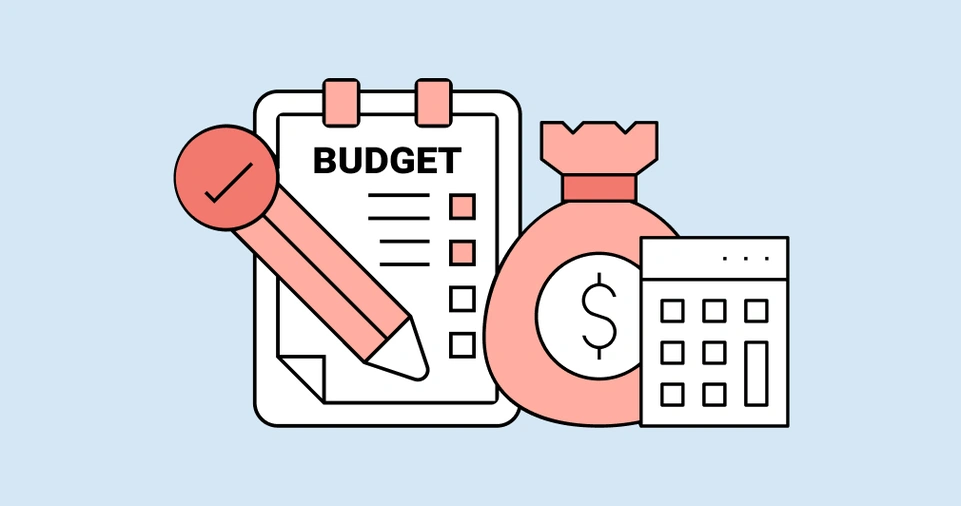Creating a budget is one of the most important steps toward financial stability, yet many people struggle to stick to one.
A budget helps you take control of your finances by tracking income, managing expenses, and setting aside savings for future goals.
Without a well-planned budget, it’s easy to overspend, fall into debt, and miss financial opportunities.
However, the key to making a budget that actually works is to create a realistic and flexible plan that aligns with your lifestyle and financial goals.
A good budget should not be restrictive; instead, it should empower you to spend wisely while still enjoying life.
It allows you to allocate your money efficiently so that you can pay for essentials, plan for emergencies, and work toward long-term financial success.
Whether you’re looking to save for a big purchase, pay off debt, or simply manage your daily expenses more effectively, this guide will walk you through a step-by-step process to create a budget that works for you.
Let’s dive into the details!
Step 1: Set Clear Financial Goals
Why Goals Are Important
Before you start creating a budget, it’s crucial to identify your financial goals.
A budget without a purpose is just a list of numbers, but when you attach meaning to it, you’re more likely to stick with it.
Financial goals give your budget direction and help you stay motivated, even when temptations to overspend arise.
Types of Financial Goals
Your financial goals can be divided into three main categories:
- Short-term goals – Saving for a vacation, paying off a small debt, or building an emergency fund.
- Medium-term goals – Saving for a down payment on a house, buying a car, or funding education.
- Long-term goals – Retirement planning, wealth building, or starting a business.
How to Set SMART Financial Goals
To increase the chances of success, use the SMART criteria for goal setting:
- Specific – Clearly define what you want to achieve.
- Measurable – Set a clear amount or deadline.
- Achievable – Be realistic based on your income and expenses.
- Relevant – Align with your overall financial objectives.
- Time-bound – Have a deadline to track progress.
For example, instead of saying, “I want to save money,” set a goal like, “I will save $5,000 for a down payment on a house in the next 12 months by saving $417 per month.”
Step 2: Track Your Income and Expenses
Understanding Your Cash Flow
Before setting up a budget, you need a clear understanding of how much money you earn and where it goes each month.
Many people underestimate their expenses, which leads to budget failures.
Tracking income and expenses helps you create a realistic budget that reflects your financial situation.
How to Track Your Income
Your total income includes all sources of money you earn, such as:
- Salary from your job
- Side hustles or freelance income
- Rental income
- Dividends from investments
- Any other passive income sources
How to Track Your Expenses
Expenses can be categorized into three main groups:
Fixed Expenses (Essential and Recurring)
- Rent or mortgage
- Utilities (electricity, water, internet, etc.)
- Insurance (health, auto, home)
- Loan payments
- Subscriptions (Netflix, gym memberships, etc.)
Variable Expenses (Fluctuating Monthly Costs)
- Groceries
- Gas and transportation
- Dining out
- Entertainment
- Shopping
Savings and Investments
- Emergency fund
- Retirement savings
- Investments in stocks, bonds, or real estate
- College or education savings
Tools to Track Your Finances
Using budgeting tools can simplify the tracking process. Some popular options include:
- Spreadsheets (Excel, Google Sheets) – Ideal for manual tracking with customizable templates.
- Budgeting Apps (Mint, YNAB, PocketGuard, GoodBudget) – Automate expense tracking and provide real-time insights.
- Bank Statements & Expense Reports – Reviewing monthly statements helps you spot spending patterns.
ALSO READ: How to Build a Successful Business from Scratch 2025
Step 3: Categorize and Prioritize Your Spending

Understanding Needs vs. Wants
One of the biggest reasons budgets fail is the inability to distinguish between needs and wants.
Identifying essential expenses versus discretionary spending will help you make better financial decisions.
Needs (Essentials for Living)
These are non-negotiable expenses required for basic survival and well-being, such as:
- Housing (rent/mortgage)
- Utilities (electricity, water, gas, etc.)
- Groceries
- Transportation (public transit, car payments, fuel, etc.)
- Insurance (health, auto, home, life, etc.)
Wants (Non-Essential but Enjoyable Expenses)
These include lifestyle choices and entertainment, such as:
- Dining out
- Streaming services
- Shopping for clothes, gadgets, or luxury items
- Travel and vacations
- Gym memberships and hobbies
Prioritizing Your Spending
Once you’ve categorized your expenses, it’s time to prioritize them. Essentials should always come first, followed by savings and investments.
Only after covering these should you allocate funds for entertainment and discretionary spending.
Step 4: Choose a Budgeting Method
Popular Budgeting Methods
There are several budgeting techniques that can help you manage your money effectively.
Choose one that best fits your financial habits and goals.
The 50/30/20 Rule
This simple budgeting method divides your income into three main categories:
- 50% Needs – Essentials like rent, food, utilities, and transportation.
- 30% Wants – Non-essential but enjoyable expenses like dining out, subscriptions, and hobbies.
- 20% Savings and Debt Repayment – Emergency fund, retirement savings, and paying off debt.
Zero-Based Budgeting
This method assigns every dollar of your income to a specific category, ensuring that your income minus expenses equals zero. This is ideal for those who want complete control over their spending.
The Envelope System
This cash-based system involves placing money in labeled envelopes for different expenses.
Once the money in an envelope is gone, you can’t spend more in that category until the next month.
Pay Yourself First
With this method, you prioritize saving by setting aside money for savings and investments first before covering other expenses.
Step 5: Automate and Adjust
Automate Your Finances
- Set up automatic payments for fixed bills like rent and utilities.
- Automate savings by transferring a set amount to your savings account each month.
- Use budgeting apps that sync with your bank account to track spending automatically.
Adjust Your Budget Regularly
Your financial situation may change, so review your budget monthly to make adjustments as needed. If your income increases, consider saving more. If expenses rise, identify areas to cut back.
Step 6: Monitor and Stay Accountable
Tracking your progress ensures that your budget remains effective.
Regularly review your spending, savings, and financial goals to stay on track.
Step 7: Cut Unnecessary Expenses & Increase Income
If you’re struggling to balance your budget, find ways to reduce expenses and boost your earnings.
Cut out unnecessary spending and explore side hustles, freelancing, or investment opportunities.
ALSO READ: How to Start Investing with Little Capital
Conclusion
A budget that actually works is one that fits your lifestyle, financial goals, and spending habits.
By setting clear goals, tracking income and expenses, choosing the right budgeting method, and staying consistent, you can take control of your finances and achieve long-term stability.
Start today and make your money work for you!







